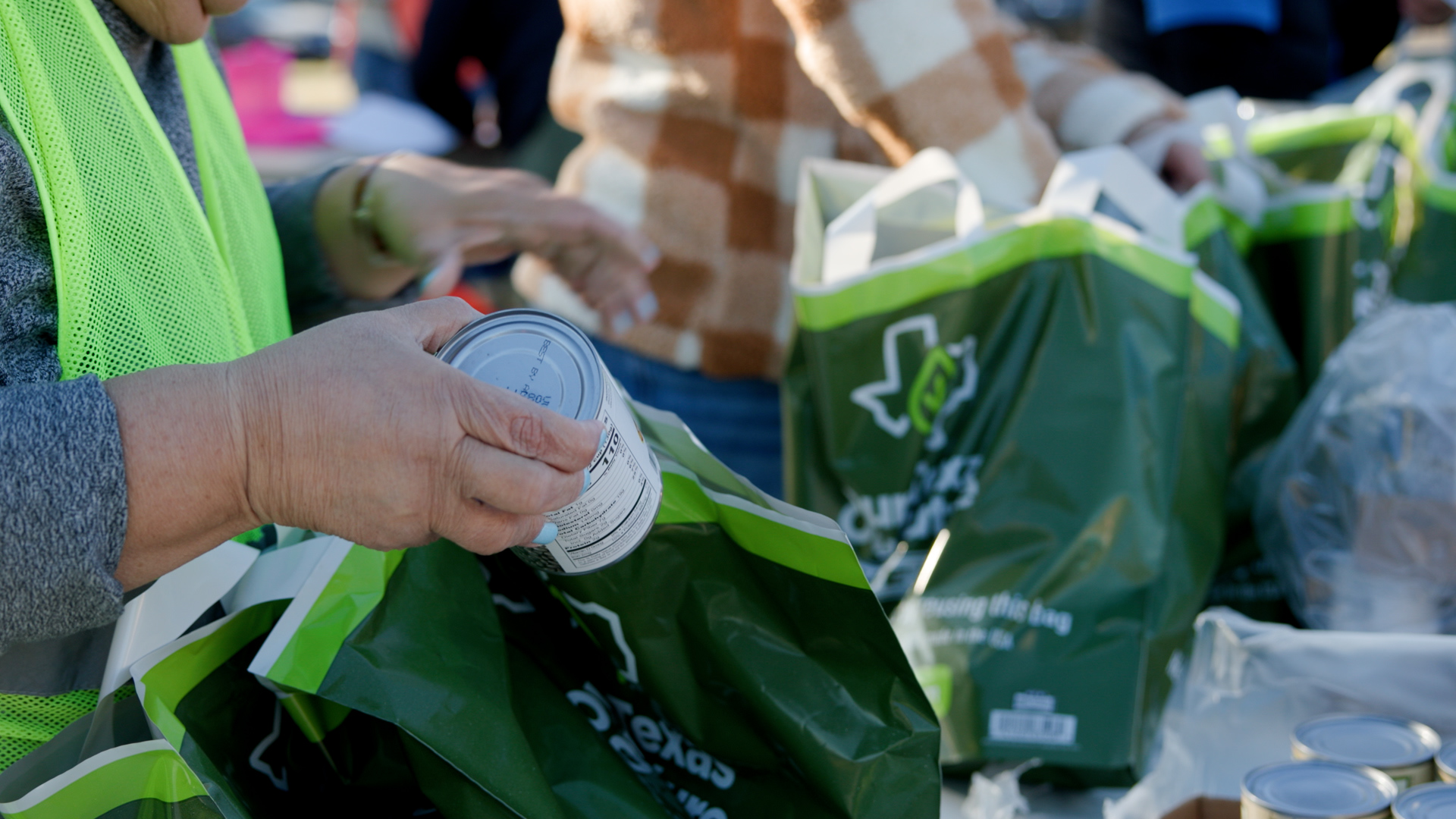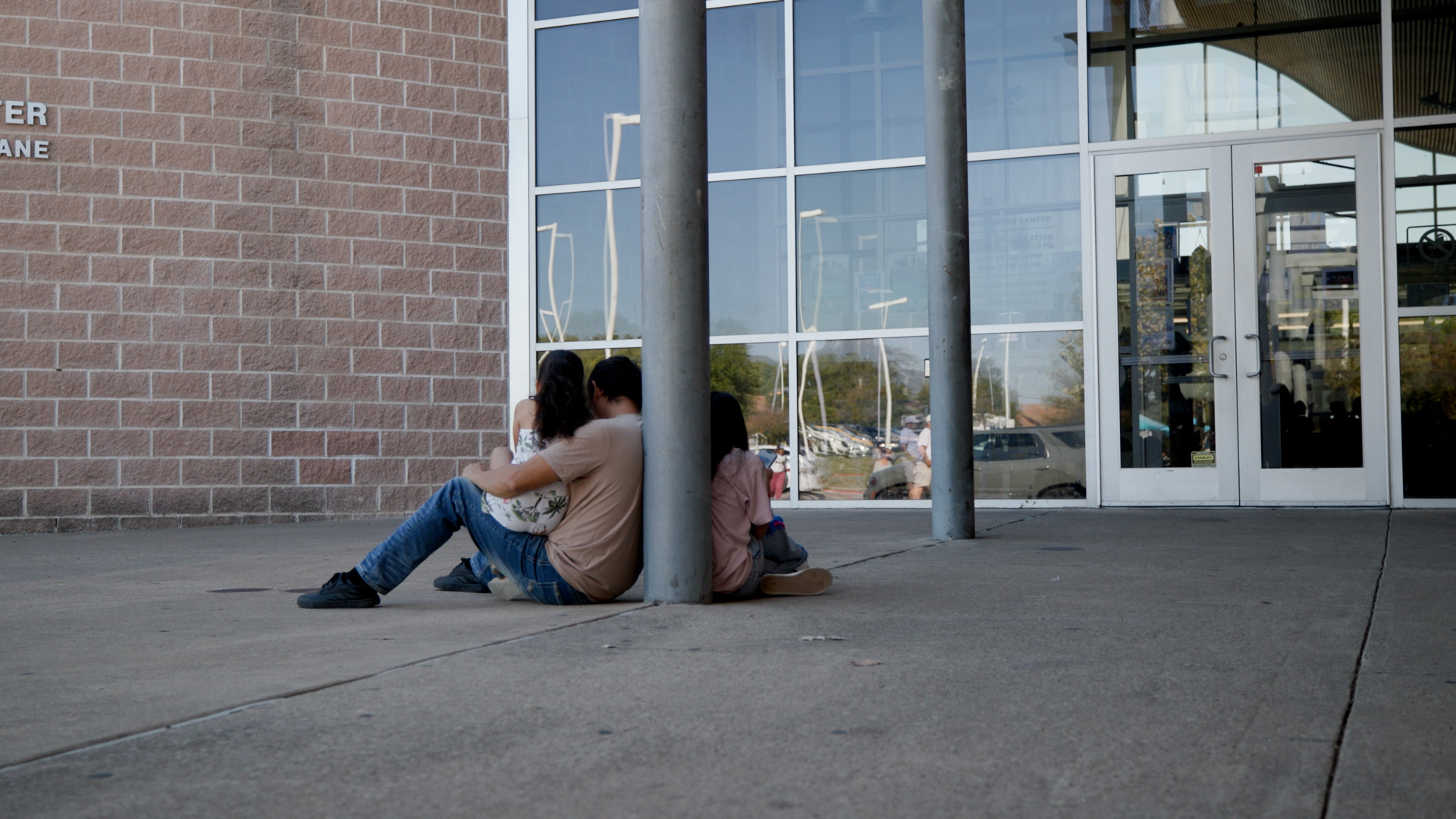72 Hours Without SNAP
It’s midmorning on Saturday, Nov. 8 and Dianne Koehler is trying to sort through a pallet of baked goods before the Carol’s Kindness+ Food Pantry opens at noon. She’s expecting a hectic afternoon.
“It's gotten so much busier,” Koehler says. “We were probably seeing 50, 55 people a week. Last week we had 193 people signed in.” Koehler says because most people who sign in are picking up for a family, they estimate that they gave food to about 600 people over the Nov. 1 weekend.
That was the first weekend SNAP recipients didn’t receive their benefits due to the government shutdown. Demand increased at food banks across central Texas, and Rundberg sites were no exception. Across three sites in one weekend, staff saw hundreds of people looking for assistance and attendees debated how to stretch dwindling funds, providing a snapshot of food insecurity in the Rundberg area.
In Travis County, nearly 87,000 individuals participate in the Supplemental Nutrition Assistance Program, or SNAP. Of that, roughly 42,000 are children under 17, according to data from Texas Health and Human Services, which distributes SNAP in Texas. While HHS doesn’t provide SNAP information by ZIP code, food access is a concern for Rundberg residents. According to 211 call data, requests for food assistance have come in second only to calls for help with housing over the past year in Rundberg.
“You can tell the difference,” says Fred Daniels. He’s been going to the Carol’s Kindness+ Food Pantry for about two months, and he says he usually uses SNAP money to buy meat and other items, and uses items from the pantry to help stretch meals. But without SNAP benefits, he says he will have to make some choices on what he spends money on.
“I got to pay [an] insurance bill or I got to pay my bill. Which one am I going to do?” Daniels says. “Am I going to buy food, or am I going to buy something else that I need? And you have to decide which one is more important, because you can't have both.”
Volunteers at the AVEY mobile food pantry place canned goods in plastic bags. Many food banks in Rundberg have seen demand increase in recent weeks.
The next morning, a similar situation unfolds at the North Austin Muslim Community Center. By 7:30 a.m., volunteers are prepping stations in a parking garage for their Drive Through Free Grocery. Outside, a line of cars idles in the cold.
“Our program starts at 8:30,” says Altaf Khatri with the NAMCC. “The first few folks have been here since six.”
The NAMCC program requires visitors to fill out a request form for food. Khatri says those requests, as well as walk-ups, have been skyrocketing in recent weeks.
“Last week alone we got 200 extra calls on our number,” he says. “When we open it up for unregistered people, who are people not in our system, we have seen twice the number coming in now.”
A family sits outside the Gus Garcia Recreation Center in Rundberg. Carol’s Kindness+ Food Pantry director Dianne Koehler says they went from serving 50 people a week to nearly 200.
The government shutdown ended on Nov. 12, and the new budget language funds SNAP through the next year. But the need for food assistance was increasing even before the government shutdown, according to Sari Vatske, President and CEO of the Central Texas Food Bank.
“Prior to the shutdown, we were seeing food insecurity on the rise,” Vatske says. “During Covid, we were serving about 60,000 families a week. Now we’re serving 90,000 per week.” Vatske says the Central Texas Food Bank had lost millions in funding earlier this year due to federal cuts, and at the same time, has had to increase food purchasing to make up the loss in food supplies. They increased that amount by an additional $1.2 million during the shutdown. But Vatske says even though the shutdown has ended, the need for assistance will most likely continue.
“We are expecting to serve at a heightened level of need,” Vatskey says.
Louis Malfaro has also seen families struggling to make ends meet, with or without federal assistance. He’s the associate executive director at Austin Voices for Education and Youth, and he says rising prices are hitting families hard.
“We know that costs keep going up. We all see it at the grocery store,” Malfaro says. “It's gotten really expensive.”
Malfaro is setting up a mobile food pantry outside Wooldridge Elementary. AVEY hosts food pantries at schools across the Rundberg area, as well as providing food at their family resource centers. He says they’re expecting to distribute food to about 450 families this morning.
“There's just less to go around for everybody,” Malfaro says.
With the government shutdown ended, SNAP recipients are expected to receive their benefits soon. In an Instagram post, the Central Texas Food Bank said the U.S. Department of Agriculture has confirmed benefits will be disbursed within 24 hours of the shutdown ending, but the rollout will vary by state. But many will still need assistance, like Roberto Cortez, an attendee at the AVEY food bank on Monday morning. After an unexpected illness cost him his job, he’s relied on SNAP benefits and food banks to get by.
“Need comes,” Cortez says. “And you never know when it’s coming.”
If you or someone you know needs food assistance, visit the Central Texas Food Bank for more information.
Community journalism doesn’t happen without community support.
Got story ideas, advice on how we can improve our reporting or just want to know more about what we do? Reach out to us at news@klru.org.
And if you value this type of reporting, then please consider making a donation to Austin PBS. Your gift makes the quality journalism done by the Decibel team possible. Thank you for your contribution.
More in Health:
See all Health posts







Contact Us
Email us at news@klru.org